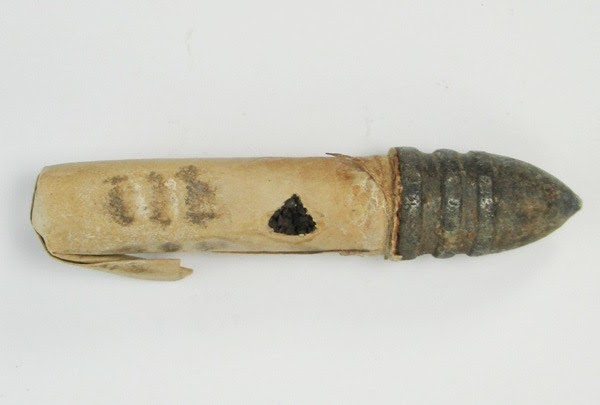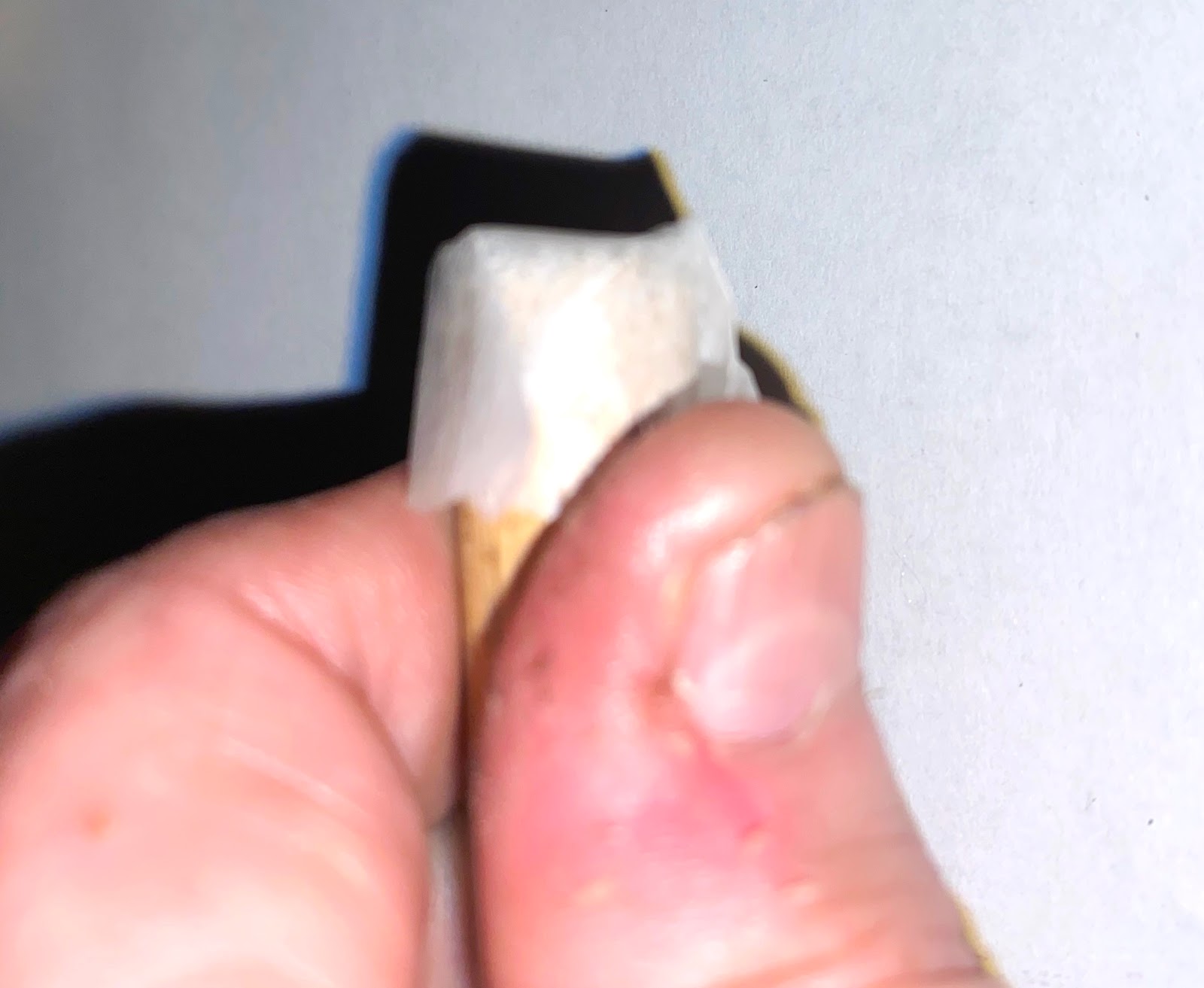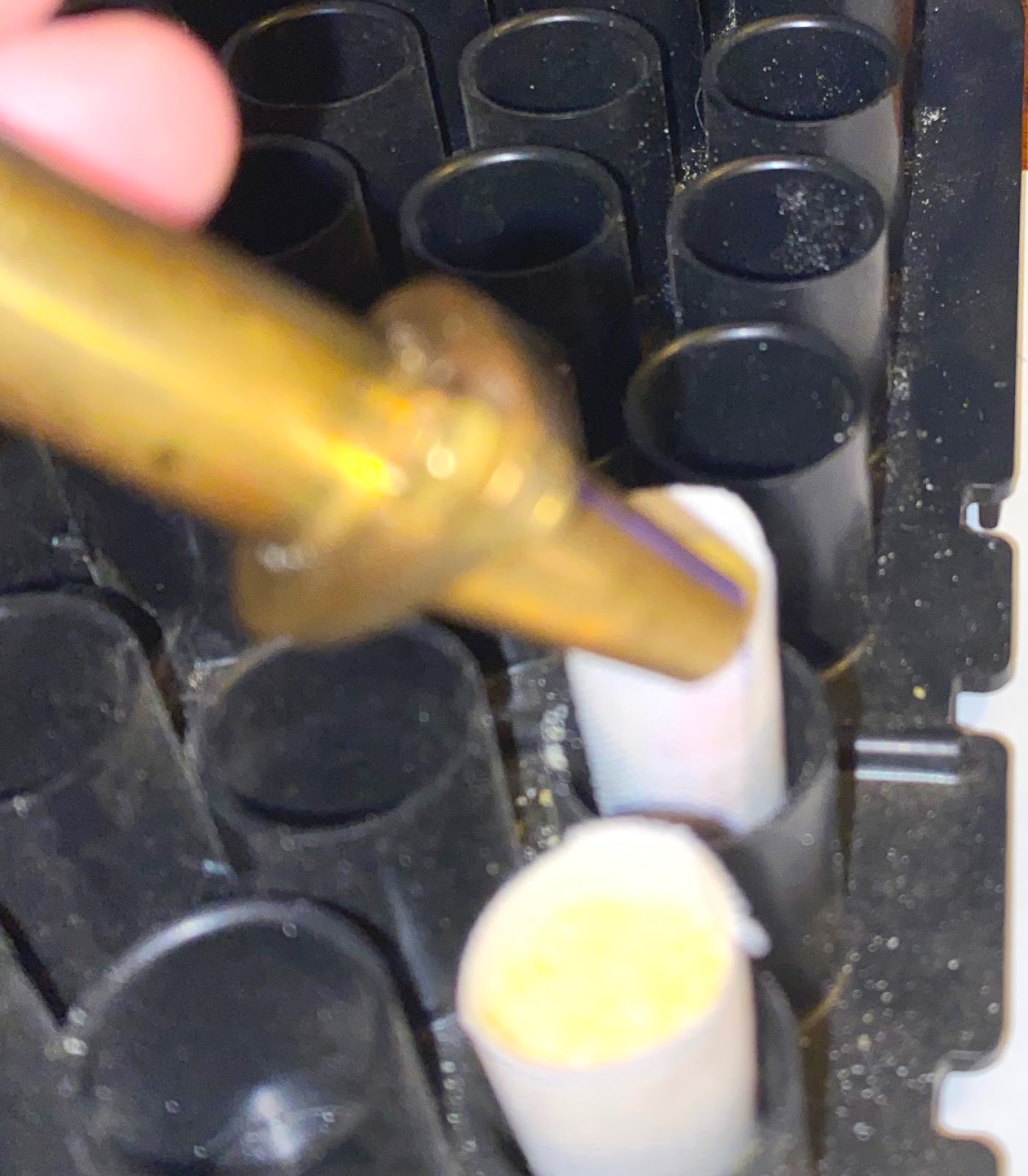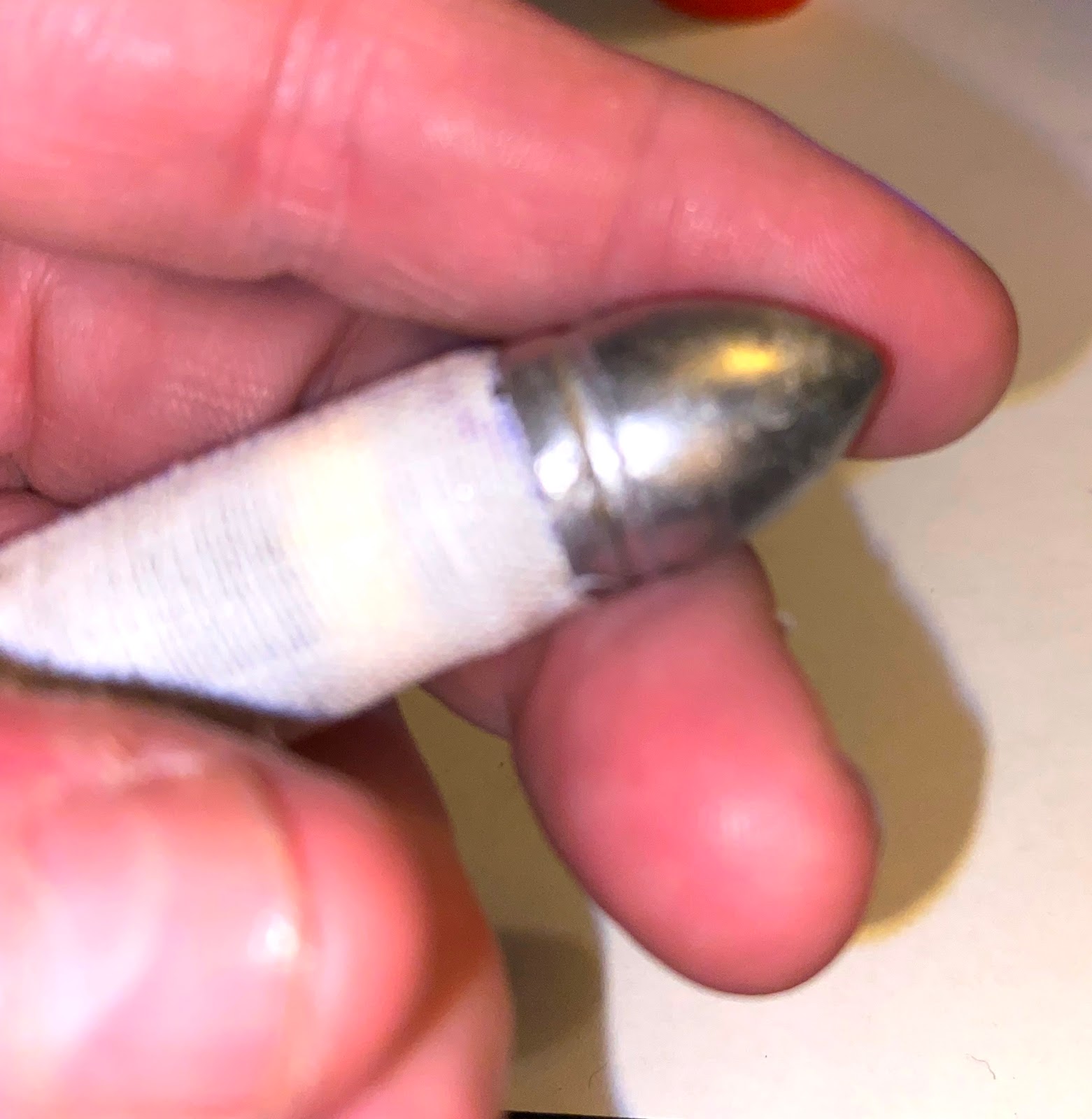 |
| My 1859 Sharps Infantry Rifle. |
Conditions
Location: Lytle Creek
Weather: 73 deg., sunny, wind 15 m.p.h. from 10:00, humidity 11%.
Shooting Position: Seated unsupported.
Range: 50 yards.
Sight Picture: Full sight, 6:00 hold.
Ammunition
I loaded 65 grains of Schuetzen 2F powder in linen shells with tissue paper bases and cornmeal filler. I used 510-grain Eras Gone Richmond labs bullets I cast myself. For detailed information about the ammunition and how I loaded it, see the article HERE.
 |
| Flat-based linen cartridges with Richmond Labs bullets. |
 |
| Reproduction Sharps cartridge pack. |
The String Test
The String Test is a method of gauging accuracy that was actually used during the Civil War and is vastly superior to simply measuring the group size since it takes both the group size and the distance from the mean center of the group to the bullseye into account in the same number, so it is a much more meaningful way to gauge your accuracy despite being incredibly easy to do. All shooters, and certainly all historical shooters, should be using this test. You can learn more about the String Test at the link HERE.
Table One
10 rounds, string measurement 44.0 in.
String Test: 4.4 in./rd.
8 rounds, string measurement 27.0 in.
String Test: 3.4 in./rd.
 |
| Table Two. |
8 rounds, string measurement 23.75 in.
String Test: 3.0 in./rd.
 |
| Table Three. |
Conclusions
To say that today was filled with frustration would be an understatement. First, the rifle would not fire unless I first filled the nipple with a few grains of 3F powder before capping (thank you David Teague!), and while that did work most of the time, it should not be necessary and it led to significant hangfires much of the time. Many of the wider hits in the pictures above were the result of these hangfires. Second, my chronograph was acting up, and I got some pretty ridiculous results on those occasions it didn't just say "Error." Third, I forgot my glasses, so my sight picture was as much guesswork as it was good shooting.
On the other hand, the rifle did shoot, and, frankly, seemed to shoot fairly well. The String Tests shown above aren't good at all, and fifty yards is a ludicrously short range, but then, my intention for today was simply to see if I could get the weapon to shoot at all (this was my third range trip with it, and I had yet to get single round to go off before). I wasn't working very hard on good accuracy, and without my glasses such could never have happened regardless. Moreover, many of the fliers that can be seen in the targets above were caused by the hangfires, and if those are removed from the string measurement we're actually looking at String Tests closer to 2-2.3 in./rd.; the rifle shoots slightly to the left, and when I'm really shooting for score I can aim off easily for that, which will reduce the score even more.
As an additional note, Sharps are notorious for having the escaping gas create fouling which binds up the breech, making it extremely difficult to open and close the action. Thanks to the excellent breech block conversion by Charlie Hahn, I merely sprayed the action with Ballistol prior to shooting, and never had even the slightest problem with the action binding.



























